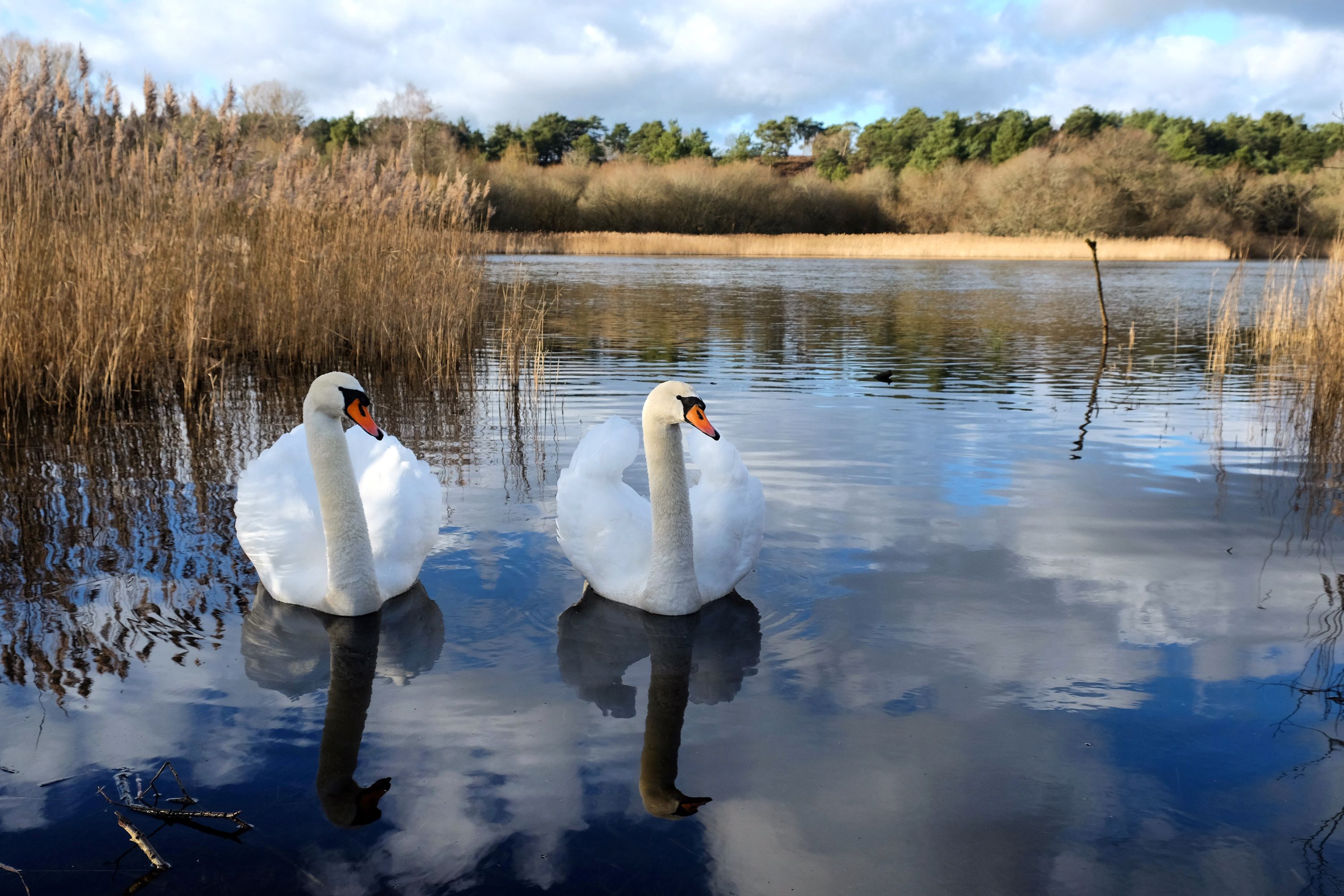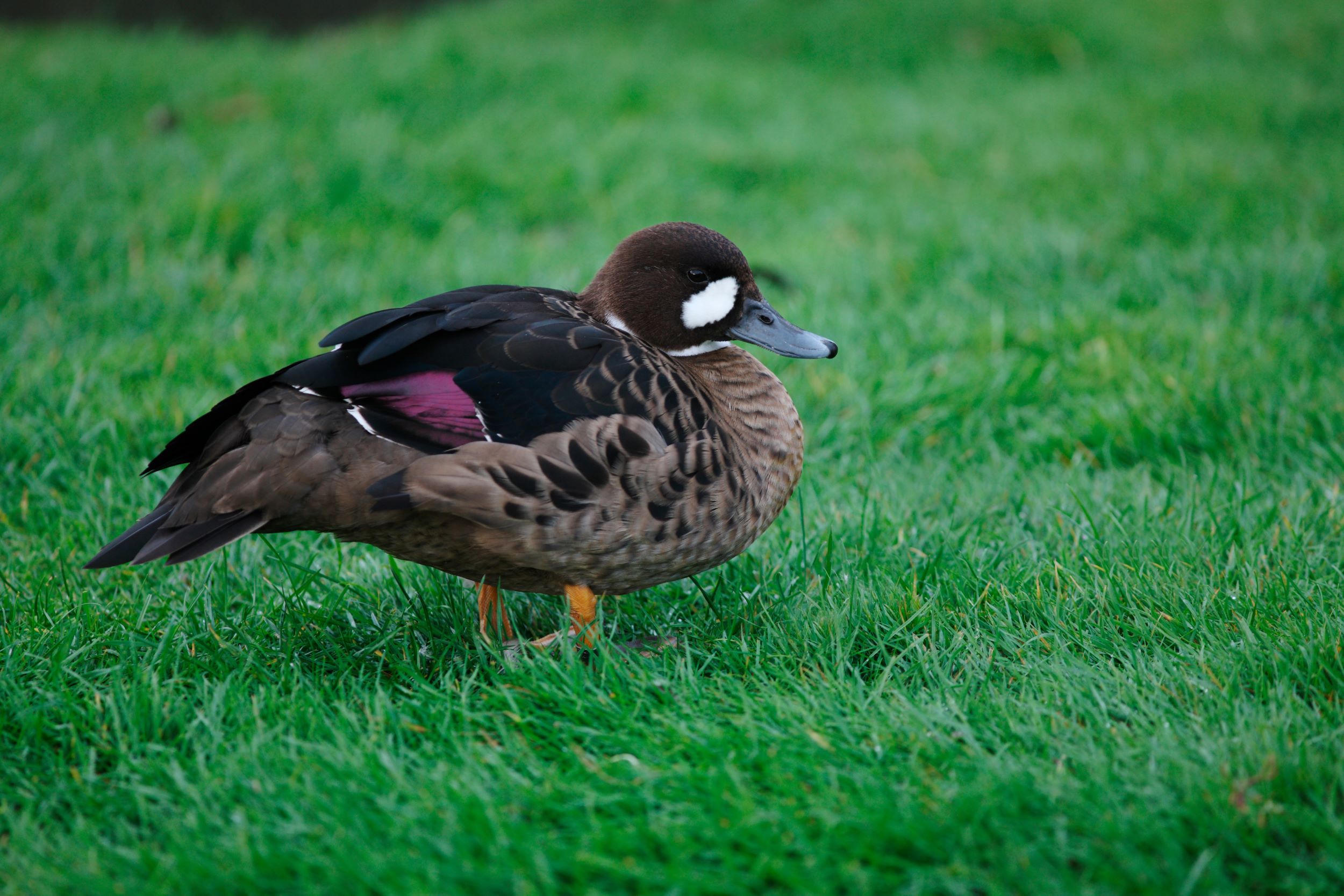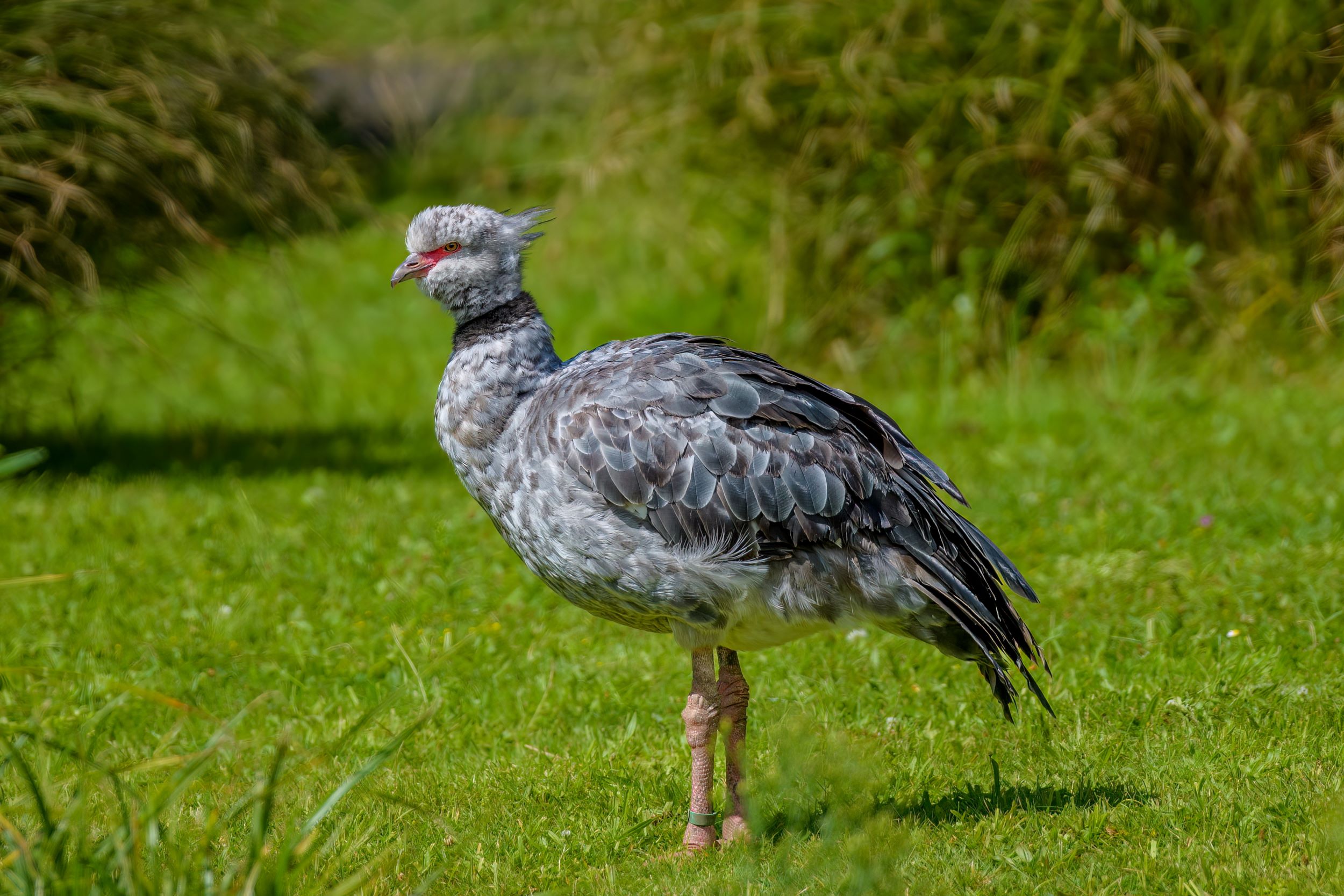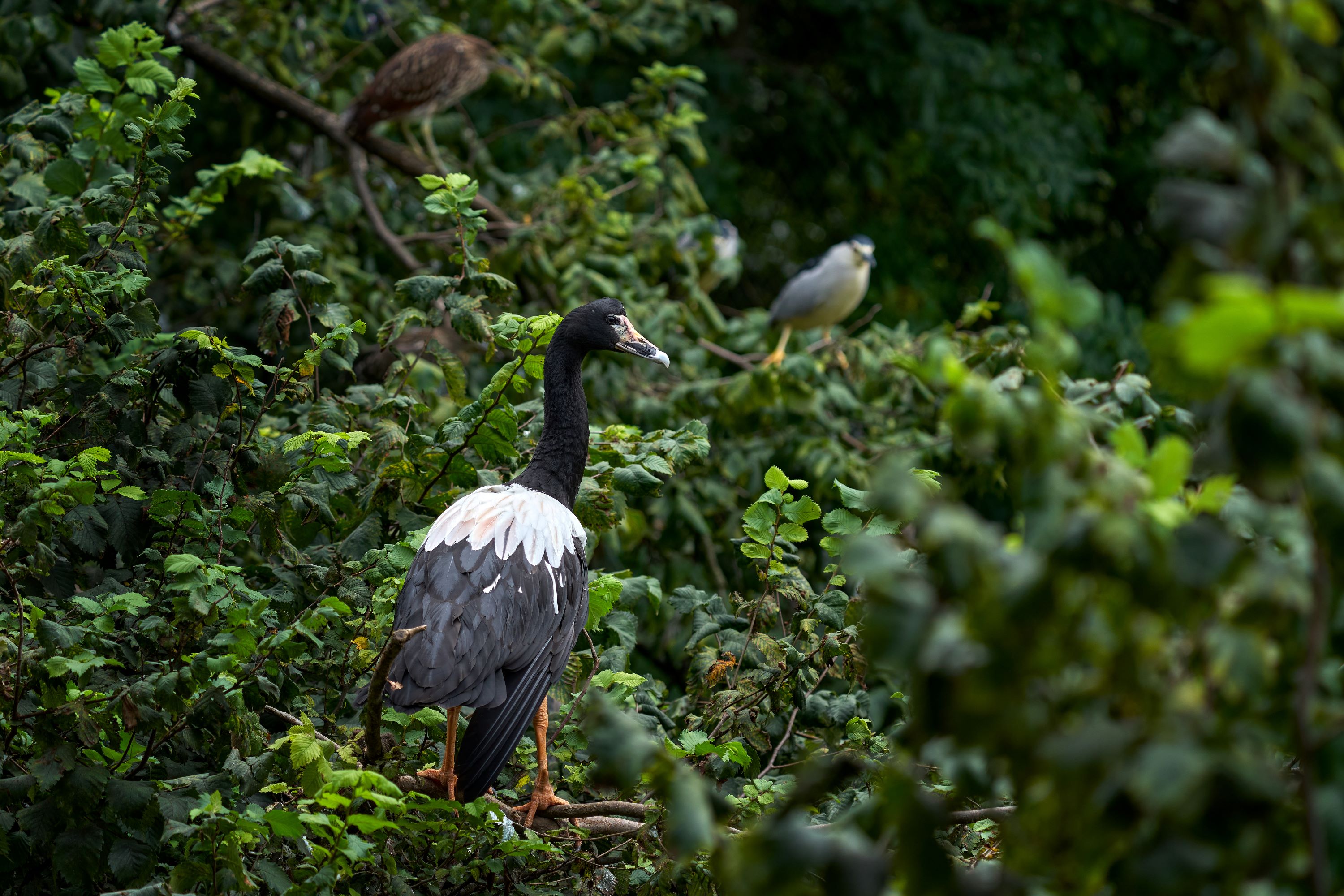
Wings Over Water: Exploring the Diverse World of Anseriformes
The order Anseriformes, comprising primarily of waterfowl, includes ducks, geese, and swans. These birds are characterized by their broad, flat bills, webbed feet, and often robust bodies, which facilitate efficient movement both in water and on land. Their bills are a distinctive feature, equipped with lamellae or comb-like structures that act as a filter, allowing these birds to sift food from water and mud. This adaptation is particularly beneficial in their feeding strategies, as many Anseriformes are omnivorous, consuming a varied diet of aquatic plants, insects, small fish, and crustaceans. Their webbed feet make them powerful swimmers, adept at foraging in water. Additionally, many species within this order have a layer of waterproof feathers, maintained by preening with oil from a gland near their tails, which is crucial for their aquatic lifestyle.
Anseriformes are found in a wide range of aquatic habitats across the world, from freshwater lakes and rivers to coastal marshes and open sea. The order includes some of the most familiar and widely distributed birds, such as the Mallard and the Canada Goose. These species exhibit diverse breeding behaviors; for instance, many ducks are known for their elaborate courtship displays, which include vocalizations and physical posturing. Geese and swans, on the other hand, often form long-term monogamous pair bonds and are known for their cooperative parenting, with both parents involved in raising the offspring. The migratory patterns of Anseriformes are also notable, with many species undertaking long-distance flights to exploit seasonal food resources and favorable breeding conditions. This migration is a critical aspect of their life cycle and has ecological implications, as these birds play a role in nutrient transfer across different regions.
Families
The order Anseriformes, primarily consisting of waterfowl, includes several families, each with unique characteristics and adaptations. The main families within this order that contain living species are:

Anatidae
The family Anatidae, a pivotal group within the order Anseriformes, includes a diverse array of waterfowl species such as ducks, geese, and swans. This family is characterized by a wide range of sizes, shapes, and behaviors, adapted to various aquatic environments across the globe. Anatidae members possess a number of distinctive features, including broad, flat bills often equipped with lamellae – fine, comb-like structures used for filtering food from water. Their webbed feet enable efficient swimming, a key adaptation for their predominantly aquatic lifestyle. Ducks, which form a significant part of this family, exhibit an incredible diversity in plumage, size, and habitat preference. From the colorful wood ducks and teals to the more ubiquitous mallards, ducks vary from surface feeders, dabbling in shallow waters, to divers that plunge underwater for food. Geese and swans, generally larger than ducks, are known for their long-distance migratory behaviors and strong pair bonding. Swans, with their graceful appearance and lifelong monogamous relationships, hold a particular allure in human culture.
Ecologically, the Anatidae family plays a crucial role in various ecosystems. Many species are key players in controlling aquatic vegetation and invertebrate populations, thus maintaining the ecological balance in wetland and riparian environments. Their migratory patterns also contribute to the ecological connectivity between different geographic regions. Anatidae birds are often seed dispersers and prey for a range of predators, making them integral to the food web. In terms of reproductive behavior, there is considerable diversity within the family. While many ducks are known for their elaborate courtship displays and nest in concealed areas near water bodies, geese and swans typically have more visible nests and exhibit strong parental care, with both parents involved in raising the young. Anatidae species face various threats, including habitat loss, pollution, and climate change, impacting their populations globally. Conservation efforts for this family are therefore essential and include habitat protection, environmental legislation, and in some cases, species-specific recovery programs. The continued existence of Anatidae is vital not only for the health of aquatic ecosystems but also for the cultural and aesthetic value these birds add to our natural world.

Anhimidae
The Anhimidae family, also known as screamers, is a small and unique group of birds within the order Anseriformes, primarily found in South America. This family comprises just three species: the Horned Screamer (Anhima cornuta), the Southern Screamer (Chauna torquata), and the Northern Screamer (Chauna chavaria). These birds are named for their loud, piercing calls, which can be heard over considerable distances and are particularly notable during the breeding season. Screamers are large, robust birds, with a somewhat goose-like appearance, but they have several distinct features. One of their most remarkable traits is the presence of sharp spurs on their wings, which are used in territorial and defensive encounters. Screamers have a unique skeletal structure with more pneumatic bones than any other birds, making them relatively light despite their large size. Their feet are only partially webbed, reflecting their lifestyle which is more terrestrial compared to other waterfowl. They are well adapted to marshy environments, where they feed on a variety of aquatic plants, seeds, and small invertebrates.
In terms of behavior and breeding, screamers are known for forming strong pair bonds, often mating for life. They build large, bulky nests in marshes or on floating vegetation, laying two to seven eggs, depending on the species. Both parents share in the incubation of the eggs and the rearing of the chicks. Screamers are gregarious birds and are often seen in small flocks, especially outside the breeding season. They are also notable for their aggressive defense of territory and can be quite combative with intruders, using their wing spurs effectively in such conflicts. Despite their large size and seemingly cumbersome build, screamers are capable fliers, though they generally prefer to remain on the ground or in water. Conservation wise, screamers are not currently facing critical threats; however, habitat destruction and degradation pose potential risks. Preserving their wetland habitats is essential for their continued survival. These unique birds are a vital part of the ecosystem in South American wetlands, contributing to the biodiversity and ecological balance of these habitats.

Anseranatidae
The Anseranatidae family, represented solely by the Magpie Goose (Anseranas semipalmata), is a distinctive and ancient lineage of waterfowl, offering a unique insight into the evolutionary history of birds. Native to northern Australia and southern New Guinea, the Magpie Goose stands apart from other waterfowl due to several unusual characteristics. Physically, it is a large bird with a long neck, robust body, and broad wings, displaying predominantly black and white plumage, which gives it a striking, magpie-like appearance. One of its most notable features is its partially webbed feet, unlike the fully webbed feet of ducks and geese in the Anatidae family. This adaptation allows the Magpie Goose to forage efficiently in shallow water and on floating vegetation, as well as to walk with ease on land. The bird's diet consists mainly of wetland vegetation, seeds, and small aquatic animals. Magpie Geese are also known for their loud honking calls and gregarious nature, often forming large, noisy flocks, particularly during the breeding season.
In terms of reproductive behavior, the Magpie Goose exhibits a fascinating social structure, often practicing cooperative breeding. This system involves one male mating with two females, all of which participate in nest building, incubation, and raising the young. Nests are typically large structures built with reeds and grasses, located in trees or on floating vegetation. The chicks are precocial, meaning they are relatively mature and mobile shortly after hatching. This trait, along with the shared parenting responsibilities, ensures a high survival rate for the offspring. The Magpie Goose holds significant cultural importance for indigenous Australians, featuring prominently in their art, stories, and traditional hunting practices. Conservation-wise, the Magpie Goose is currently not listed as endangered, but it faces potential threats from habitat loss due to wetland drainage and alteration, as well as from hunting. The preservation of wetland habitats is crucial for the survival of this species, as these environments are vital not only for the Magpie Goose but also for a diverse array of other wildlife. The continued existence of the Magpie Goose is essential for maintaining the ecological balance and biodiversity of the wetland ecosystems in which it thrives.